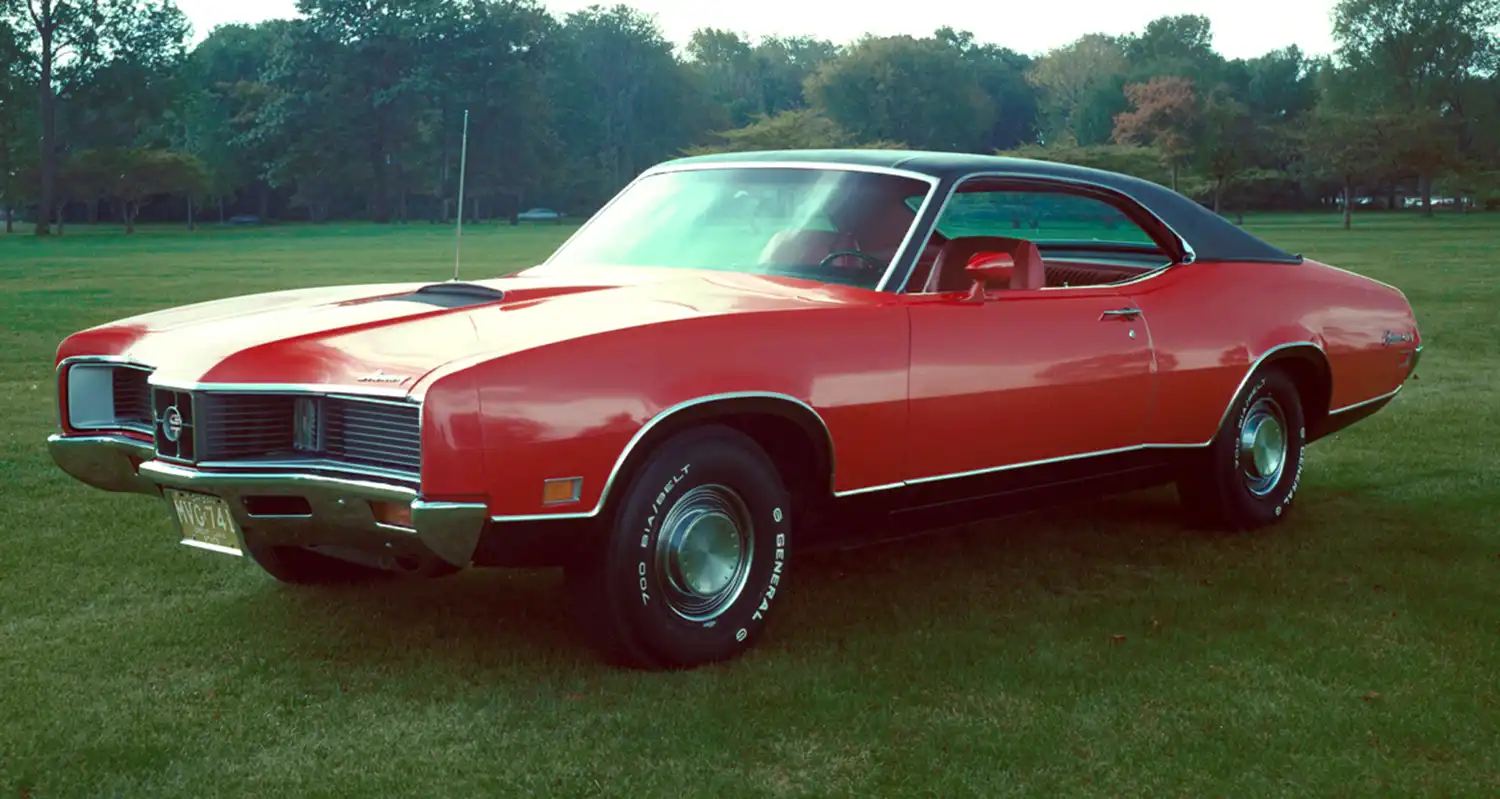
The year 1971 marked a turning point for American muscle cars. Many models were being redesigned. One of the most aggressive redesigns was the 1971 Mercury Cyclone GT hardtop. It was part of a major redesign for the model. This car was a final, powerful hurrah for the Cyclone name. The car’s styling was bold and unapologetic. It was a fitting end to a legendary nameplate. This hardtop is a true auto icon. It represents the best of the muscle car era.
A Redesign for the Final Cyclone
The 1971 Mercury Cyclone GT was a brand-new car. Its body was much larger and more rounded than before. The front end had a prominent, pointed nose. It was flanked by a full-width grille. This design gave the car an aggressive, windswept look. The hardtop body style was a key feature. It gave the car a sleek, fast profile. This design was a major departure. It showed Mercury’s commitment to muscle cars. This was a car that looked like it was moving even when standing still.
The Muscle Under the Hood
The heart of the 1971 Mercury Cyclone GT was its engine. It was a powerful V8. The standard engine was a 351 cubic-inch Cleveland V8. This engine provided a lot of power. For true performance, a 429 Cobra Jet V8 was optional. This was a very serious engine. It delivered a huge performance boost. The car was a genuine muscle machine.
The Cyclone was available with different transmissions. You could get a manual transmission. An automatic transmission was also an option. This engine and transmission combination was impressive. It ensured the car had plenty of power. It was ready to take on any road.
The GT Treatment: Style and Substance
The “GT” trim added more than just style. It gave the Cyclone a race-inspired look. The car featured a special hood with air scoops. It had side stripes and a “GT” badge. A rear wing was also an option. These elements gave the car a very sporty look. They emphasized its performance pedigree. This was not just a stylish car. It was a performance machine. This trim package made the Cyclone stand out. It gave it a very special appeal.
The Interior: A Driver-Focused Cabin
The interior of the 1971 Mercury Cyclone GT was made for driving. It featured a driver-focused dashboard. A full set of gauges was included. These gauges gave the driver all the information needed. Optional bucket seats and a center console were available. This added to the sporty feel. The cabin was a functional and comfortable place. It was designed for performance. It was a great place to be for a quick drive or a long road trip.
The Hardtop Body Style
The hardtop body style was a popular feature. It gave the car a very clean, uninterrupted profile. The lack of a B-pillar was a key design element. It made the side windows seem larger. When they were down, it felt very open. This design was both elegant and sporty. It was a perfect match for the car’s muscular body. This hardtop design helped the Cyclone GT stand out. It made the car a timeless classic.
The Cyclone’s Legacy
The 1971 model year was the final year for the Cyclone. It was a powerful farewell to the name. It was a culmination of the model’s history. It had the style of the past and the muscle of the era. It remains a beloved and highly collectible car. It is a symbol of a great time in American car history. The 1971 Mercury Cyclone GT hardtop is a true auto icon. It is a fantastic example of a muscle car.
The 1971 Mercury Cyclone GT hardtop is a memorable muscle car. It was the final version of the Cyclone name. It featured a full redesign, with a more aggressive, muscular body. Power came from a choice of V8 engines, including the potent 429 Cobra Jet. The “GT” trim added performance and styling cues. This final model remains a beloved icon of the muscle car era.
Disclaimer: Vehicle specifications and historical data are based on commonly accepted information. Actual figures may vary based on specific vehicle configuration and condition.
Source: Ford Heritage Vault